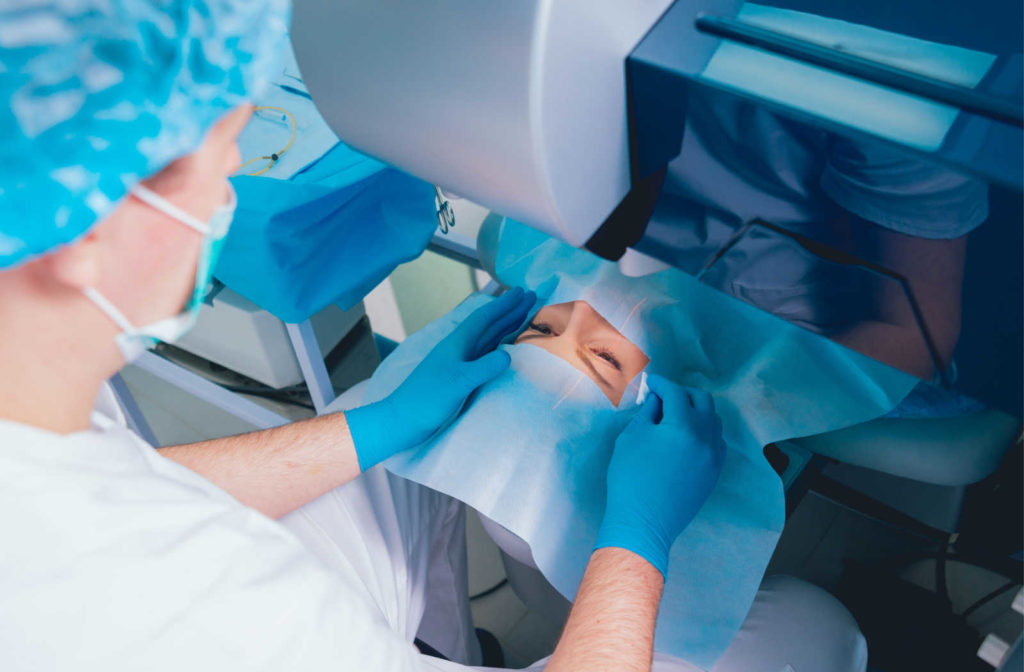For your eyes to remain clean, healthy and protected, they need an adequate supply of healthy tears. Dry eye results when the eyes don’t produce enough or poor quality tears.
Causes of dry eye disease can include aging, certain medications, medical conditions, and environmental factors, among others mentioned below. The lack of moisture in the eyes can leave them feeling itchy, scratchy, and irritated.
When dry eyes aren’t treated, tear instability can lead to inflammation or damage to the eye’s surface. Comprehensive eye exams can help identify the underlying cause of your dry eyes and recommend suitable treatment options to provide relief.
Symptoms of Dry Eye
When your eyes don’t have enough lubrication, you can experience discomfort and other symptoms from the dryness:
- Stinging and burning
- Scratchy or gritty sensation in your eyes
- A feeling that something is in your eyes
- Stringy mucus in or around your eyes
- Light sensitivity
- Eye redness
- Eye fatigue
- Contact lens discomfort
- Difficulty with nighttime driving
- Excess watering of your eyes
- Blurred vision
Causes of Dry Eyes
Healthy tear film has 3 layers, and blinking helps to spread them evenly over the eye’s surface. When there’s an imbalance in the tear film, you can get dry eyes:
- Inner mucous layer—helps spread the tears evenly.
- Middle watery layer—hydrates the eye, protects the cornea, and repels bacteria.
- Outer oily layer—prevents tear evaporation.
It can be hard to pinpoint what’s disrupting your tear-flow system because there can be several causes, including:
Aging
Anyone can get dry eye disease, but it’s more common in people aged 50 and older. This is because tear production slows with age.
Medical Conditions
Certain medical conditions, such as diabetes, thyroid disorders, lupus, rheumatoid arthritis and Sjogren’s syndrome, are more likely to cause dry eye symptoms.
Medication
Certain medications like antihistamines, blood pressure medication, antidepressants, and decongestants, can reduce tear production.
Gender
Women are more at risk of dry eyes than men. It can be due to hormonal changes during pregnancy, when taking oral contraceptives, and during menopause.
Eyelid Problems
The following eyelid problems can cause dry eyes:
- Inflammation of the eyelids (blepharitis)
- Inward (entropion) or outward (ectropion) turning of the eyelids
- Eyelids that don’t close completely when you sleep (lagophthalmos)

Eye Surgery
Refractive eye surgery, such as LASIK, can decrease tear production.
Contact Lens Wear
Long-term contact lens wear can contribute to dry eye symptoms.
Computer Use
Spending long hours in front of a computer screen makes your eyes work harder, leading to digital eye strain, less blinking, and contribute to dry eyes.
Environmental Factors
Indoor and outdoor environmental factors include:
- Air conditioning, heating, and low humidity can increase tear evaporation.
- Smoke, wind, dry air, and high altitudes can increase your risk of dry eyes.
Treatment for Dry Eye Disease
Restoring healthy tear film can reduce dry eye symptoms and provide much-needed relief for comfortable vision. Treatment can include increasing tear production, quality tears, preventing drainage, and treating underlying causes of dry eyes.
Your eye doctor can recommend the following treatment options:
- Artificial tears can treat mild cases of dry eye to supplement natural tears. Preservative-free artificial tears can prevent irritation.
- Medicated eye drops can be prescribed to increase natural tear production.
- Punctal plugs block the tear ducts to prevent drainage and keep tears in your eyes longer. This can reduce dry eye symptoms.
- Lifestyle changes can include using a humidifier and avoiding air conditioning.
How to Prevent Dry Eyes
You can’t cure dry eye, but you can manage it to prevent damage and scar the cornea (the clear protective outer layer). To reduce your dry eye symptoms, you can try the following measures:
- Take frequent breaks when reading or using the computer.
- Remember to blink frequently.
- Protect your eyes when riding a bike, skiing, or running and when exposed to wind, smoke, and dry air.
- Avoid air conditioning.
- Avoid air blowing directly into your eyes.
- Speak to your eye doctor about trying different contact lenses that can help with your dry eye symptoms.
- Speak to your eye doctor if taking supplements such as omega-3 fatty acids can help.
- Drink plenty of water to prevent dehydration.
Dry Eye Therapy
Having dry eye disease can be uncomfortable and get in the way of daily living. Dry eye symptoms can’t go away on their own, but symptoms can be managed with treatment.
If you experience symptoms and seek relief, dry eye therapy at Calgary Optometry Centre can help. Book your appointment today.




